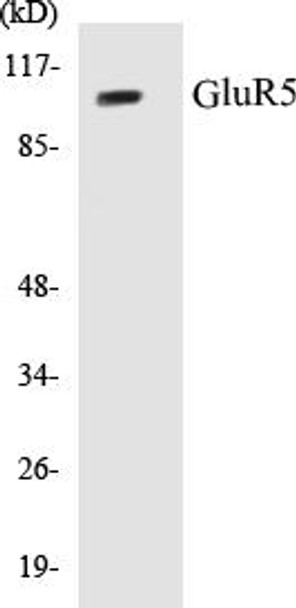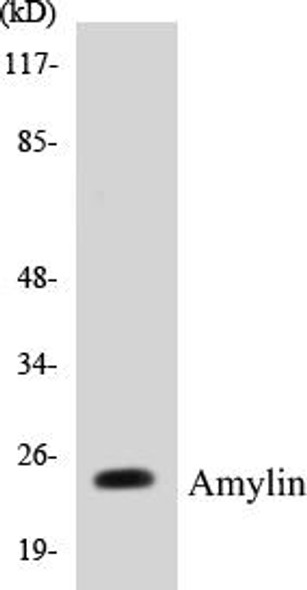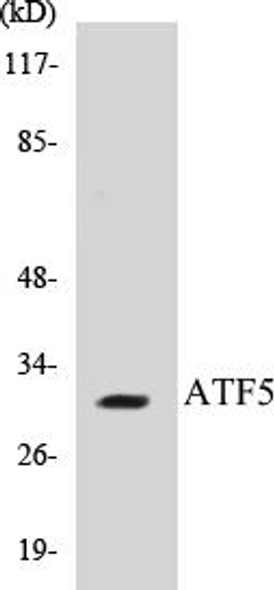Description
GluR5 Colorimetric Cell-Based ELISA Kit
The GluR5 Colorimetric Cell-Based ELISA Kit is a powerful tool for the accurate quantification of GluR5 levels in cell lysates and tissue homogenates. This kit offers high sensitivity and specificity, ensuring precise and reliable results for your research needs.GluR5, a subtype of the glutamate receptor family, plays a key role in excitatory neurotransmission and synaptic plasticity. Dysregulation of GluR5 has been implicated in various neurological disorders including epilepsy, Alzheimer's disease, and schizophrenia.
Studying GluR5 levels can provide valuable insights into these conditions and aid in the development of novel therapeutic strategies.With easy-to-follow protocols and quick assay times, the GluR5 Colorimetric Cell-Based ELISA Kit is suitable for high-throughput screening and large-scale studies. Trust in this kit to deliver accurate and reproducible data, advancing your research in the field of neuroscience.
| Product Name: | GluR5 Colorimetric Cell-Based ELISA |
| Product Code: | CBCAB00307 |
| ELISA Type: | Cell-Based |
| Target: | GluR5 |
| Reactivity: | Human, Mouse, Rat |
| Dynamic Range: | > 5000 Cells |
| Detection Method: | Colorimetric 450 nmStorage/Stability:4°C/6 Months |
| Format: | 96-Well Microplate |
The GluR5 Colorimetric Cell-Based ELISA Kit is a convenient, lysate-free, high throughput and sensitive assay kit that can detect GluR5 protein expression profile in cells. The kit can be used for measuring the relative amounts of GluR5 in cultured cells as well as screening for the effects that various treatments, inhibitors (ie siRNA or chemicals), or activators have on GluR5.
Qualitative determination of GluR5 concentration is achieved by an indirect ELISA format. In essence, GluR5 is captured by GluR5-specific primary antibodies while the HRP-conjugated secondary antibodies bind the Fc region of the primary antibody. Through this binding, the HRP enzyme conjugated to the secondary antibody can catalyze a colorimetric reaction upon substrate addition. Due to the qualitative nature of the Cell-Based ELISA, multiple normalization methods are needed:
| 1. | A monoclonal antibody specific for human GAPDH is included to serve as an internal positive control in normalizing the target absorbance values. |
| 2. | Following the colorimetric measurement of HRP activity via substrate addition, the Crystal Violet whole-cell staining method may be used to determine cell density. After staining, the results can be analysed by normalizing the absorbance values to cell amounts, by which the plating difference can be adjusted. |
| Database Information: | Gene ID: 2897, UniProt ID: P39086, OMIM: 138245, Unigene: Hs.664641 |
| Gene Symbol: | GRIK1 |
| Sub Type: | None |
| UniProt Protein Function: | GluR5: Ionotropic glutamate receptor. L-glutamate acts as an excitatory neurotransmitter at many synapses in the central nervous system. Binding of the excitatory neurotransmitter L- glutamate induces a conformation change, leading to the opening of the cation channel, and thereby converts the chemical signal to an electrical impulse. The receptor then desensitizes rapidly and enters a transient inactive state, characterized by the presence of bound agonist. May be involved in the transmission of light information from the retina to the hypothalamus. Belongs to the glutamate-gated ion channel (TC 1.A.10.1) family. GRIK1 subfamily. 2 isoforms of the human protein are produced by alternative splicing. |
| UniProt Protein Details: | Protein type:Membrane protein, integral; Membrane protein, multi-pass; Channel, ligand-gated Chromosomal Location of Human Ortholog: 21q22.11 Cellular Component: presynaptic membrane; postsynaptic membrane; kainate selective glutamate receptor complex; integral to plasma membrane; dendrite; plasma membrane; cell junction Molecular Function:extracellular-glutamate-gated ion channel activity; kainate selective glutamate receptor activity Biological Process: synaptic transmission, glutamatergic; nervous system development; regulation of synaptic transmission, glutamatergic; central nervous system development; glutamate signaling pathway; positive regulation of synaptic transmission, GABAergic; negative regulation of synaptic transmission, glutamatergic; regulation of inhibitory postsynaptic membrane potential; synaptic transmission; behavioral response to pain; transport; ionotropic glutamate receptor signaling pathway; adult behavior; regulation of excitatory postsynaptic membrane potential; positive regulation of gamma-aminobutyric acid secretion |
| NCBI Summary: | Glutamate receptors are the predominant excitatory neurotransmitter receptors in the mammalian brain and are activated in a variety of normal neurophysiologic processes. This gene product belongs to the kainate family of glutamate receptors, which are composed of four subunits and function as ligand-activated ion channels. The subunit encoded by this gene is subject to RNA editing (CAG->CGG; Q->R) within the second transmembrane domain, which is thought to alter the properties of ion flow. Alternative splicing, resulting in transcript variants encoding different isoforms, has been noted for this gene. [provided by RefSeq, Jul 2008] |
| UniProt Code: | P39086 |
| NCBI GenInfo Identifier: | 729597 |
| NCBI Gene ID: | 2897 |
| NCBI Accession: | P39086.1 |
| UniProt Secondary Accession: | P39086,Q13001, Q86SU9, |
| UniProt Related Accession: | P39086 |
| Molecular Weight: | 102,631 Da |
| NCBI Full Name: | Glutamate receptor ionotropic, kainate 1 |
| NCBI Synonym Full Names: | glutamate receptor, ionotropic, kainate 1 |
| NCBI Official Symbol: | GRIK1 |
| NCBI Official Synonym Symbols: | EAA3; EEA3; GLR5; GLUR5; GluK1 |
| NCBI Protein Information: | glutamate receptor ionotropic, kainate 1; gluR-5; glutamate receptor 5; excitatory amino acid receptor 3 |
| UniProt Protein Name: | Glutamate receptor ionotropic, kainate 1 |
| UniProt Synonym Protein Names: | Excitatory amino acid receptor 3; EAA3; Glutamate receptor 5; GluR-5; GluR5 |
| Protein Family: | Glutamate receptor ionotropic |
| UniProt Gene Name: | GRIK1 |
| UniProt Entry Name: | GRIK1_HUMAN |
| Component | Quantity |
| 96-Well Cell Culture Clear-Bottom Microplate | 2 plates |
| 10X TBS | 24 mL |
| Quenching Buffer | 24 mL |
| Blocking Buffer | 50 mL |
| 15X Wash Buffer | 50 mL |
| Primary Antibody Diluent | 12 mL |
| 100x Anti-Phospho Target Antibody | 60 µL |
| 100x Anti-Target Antibody | 60 µL |
| Anti-GAPDH Antibody | 60 µL |
| HRP-Conjugated Anti-Rabbit IgG Antibody | 12 mL |
| HRP-Conjugated Anti-Mouse IgG Antibody | 12 mL |
| SDS Solution | 12 mL |
| Stop Solution | 24 mL |
| Ready-to-Use Substrate | 12 mL |
| Crystal Violet Solution | 12 mL |
| Adhesive Plate Seals | 2 seals |
The following materials and/or equipment are NOT provided in this kit but are necessary to successfully conduct the experiment:
- Microplate reader able to measure absorbance at 450 nm and/or 595 nm for Crystal Violet Cell Staining (Optional)
- Micropipettes with capability of measuring volumes ranging from 1 µL to 1 ml
- 37% formaldehyde (Sigma Cat# F-8775) or formaldehyde from other sources
- Squirt bottle, manifold dispenser, multichannel pipette reservoir or automated microplate washer
- Graph paper or computer software capable of generating or displaying logarithmic functions
- Absorbent papers or vacuum aspirator
- Test tubes or microfuge tubes capable of storing ≥1 ml
- Poly-L-Lysine (Sigma Cat# P4832 for suspension cells)
- Orbital shaker (optional)
- Deionized or sterile water
*Note: Protocols are specific to each batch/lot. For the correct instructions please follow the protocol included in your kit.
| Step | Procedure |
| 1. | Seed 200 µL of 20,000 adherent cells in culture medium in each well of a 96-well plate. The plates included in the kit are sterile and treated for cell culture. For suspension cells and loosely attached cells, coat the plates with 100 µL of 10 µg/ml Poly-L-Lysine (not included) to each well of a 96-well plate for 30 minutes at 37°C prior to adding cells. |
| 2. | Incubate the cells for overnight at 37°C, 5% CO2. |
| 3. | Treat the cells as desired. |
| 4. | Remove the cell culture medium and rinse with 200 µL of 1x TBS, twice. |
| 5. | Fix the cells by incubating with 100 µL of Fixing Solution for 20 minutes at room temperature. The 4% formaldehyde is used for adherent cells and 8% formaldehyde is used for suspension cells and loosely attached cells. |
| 6. | Remove the Fixing Solution and wash the plate 3 times with 200 µL 1x Wash Buffer for five minutes each time with gentle shaking on the orbital shaker. The plate can be stored at 4°C for a week. |
| 7. | Add 100 µL of Quenching Buffer and incubate for 20 minutes at room temperature. |
| 8. | Wash the plate 3 times with 1x Wash Buffer for 5 minutes each time. |
| 9. | Add 200 µL of Blocking Buffer and incubate for 1 hour at room temperature. |
| 10. | Wash 3 times with 200 µL of 1x Wash Buffer for 5 minutes each time. |
| 11. | Add 50 µL of 1x primary antibodies (Anti-GluR5 Antibody and/or Anti-GAPDH Antibody) to the corresponding wells, cover with Parafilm and incubate for 16 hours (overnight) at 4°C. If the target expression is known to be high, incubate for 2 hours at room temperature. |
| 12. | Wash 3 times with 200 µL of 1x Wash Buffer for 5 minutes each time. |
| 13. | Add 50 µL of 1x secondary antibodies (HRP-Conjugated AntiRabbit IgG Antibody or HRP-Conjugated Anti-Mouse IgG Antibody) to corresponding wells and incubate for 1.5 hours at room temperature. |
| 14. | Wash 3 times with 200 µL of 1x Wash Buffer for 5 minutes each time. |
| 15. | Add 50 µL of Ready-to-Use Substrate to each well and incubate for 30 minutes at room temperature in the dark. |
| 16. | Add 50 µL of Stop Solution to each well and read OD at 450 nm immediately using the microplate reader. |
(Additional Crystal Violet staining may be performed if desired – details of this may be found in the kit technical manual.)






